The History of VPN Technology

Hey everyone! Are you using a VPN to browse websites? Many people do because VPNs are incredibly popular today for online security and freedom. But have you ever wondered what the first users did with VPNs? Did they invent VPNs solely for online security, or was it to watch content from other countries?
Curious to find out? Let’s dive into the fascinating history of VPN technology together!
The Internet: The Foundation of VPNs
Before we explore the history of VPNs, let's take a brief look at the Internet because it's the foundation of VPN creation.
1960s-1970s: ARPANET - Limited Connections
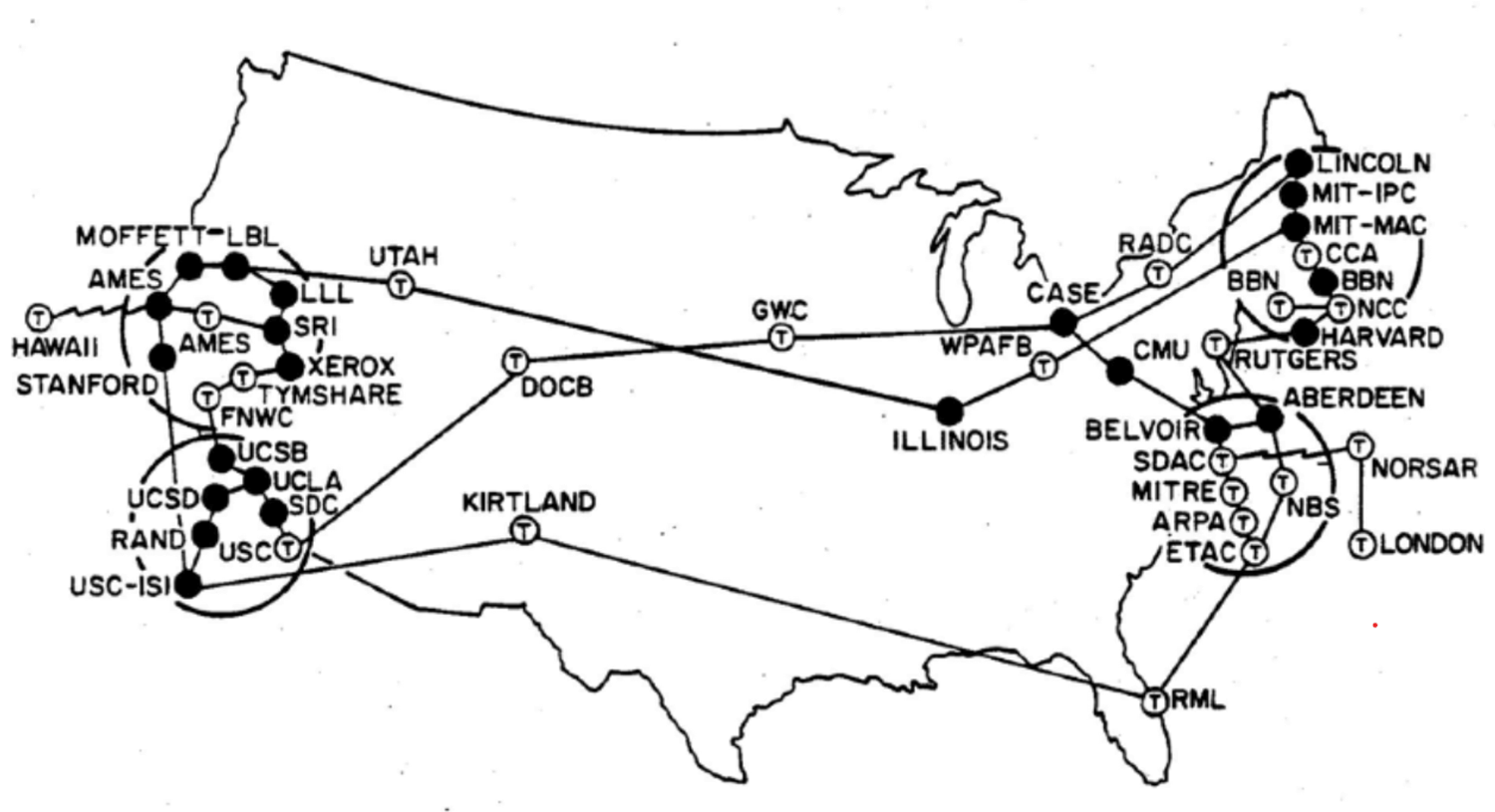
Source of the picture: https://en.wikipedia.org/wiki/ARPANET
In the 1960s, the U.S. Department of Defense and several research institutions began exploring how to share information between computers. Back then, computers were large and expensive, mainly found in research institutions and government facilities. ARPA (the Pentagon’s Advanced Research Project Agency) invented the first network, called ARPANET, to enable computers in different locations to communicate with each other. However, it could only connect computers on the same network.

1980s: TCP/IP - Public Connections

(💡Click the picture to understand what is TCP)
In the 1980s, a unified communication protocol called TCP/IP was introduced, allowing computers on different networks to connect. This was like using a common language to communicate with people from different countries. Along with TCP/IP, the Domain Name System (DNS) was introduced in 1984, making it easier to remember websites by turning numbers into readable domain names (like google.com).
Soon after the establishment of TCP/IP, the internet attracted the broader public. The first online platform, AOL, emerged in 1985, allowing people to join chat rooms and online communities. However, connecting to the Internet was slow and inconvenient, as users had to call their internet service provider. This led to the development of commercial ISPs and the quest for faster, more convenient connections.
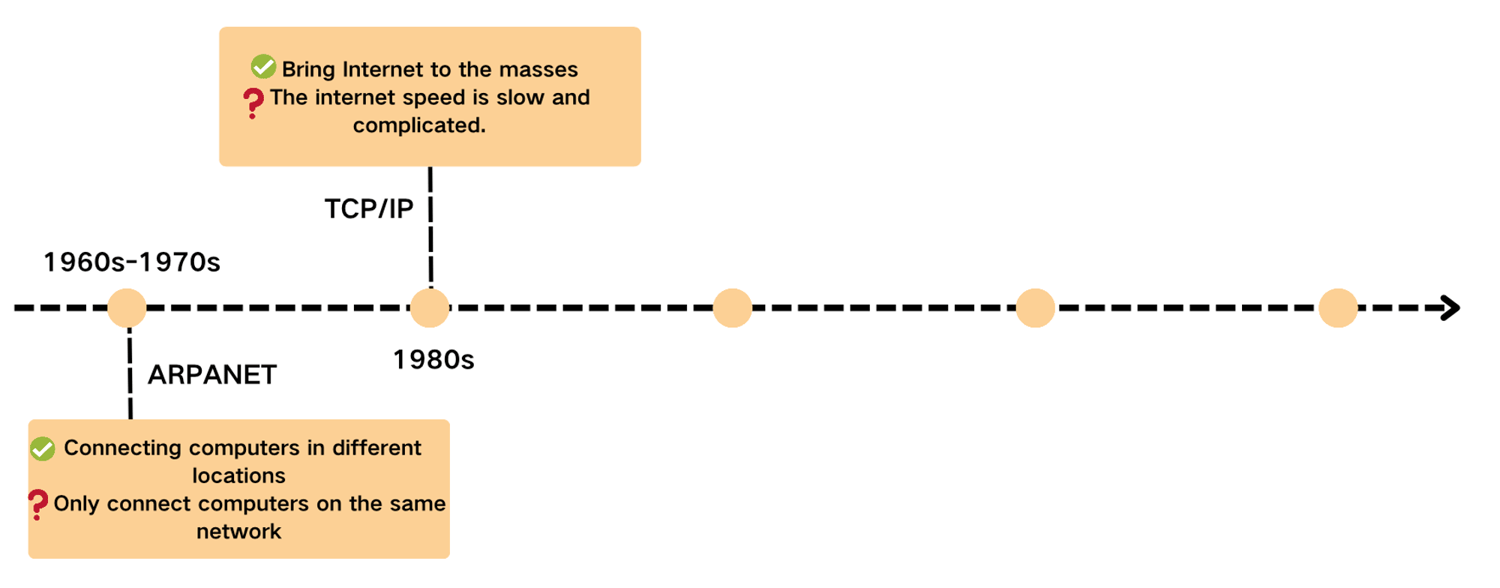
1990s: The Web Revolution- More Convenient Connections

In 1991, Tim Berners-Lee invented HTTP (Hypertext Transfer Protocol), allowing users to navigate between web pages by clicking on hyperlinks. This simplified access and sharing of information. Following closely, the World Wide Web (WWW) was born, connecting scattered information into a global network.
As the internet grew, so did cybercrimes. The need for secure and private online communication became increasingly important, leading to the development of VPN technology.
For a comprehensive overview of what VPNs are, visit our What is VPN page.
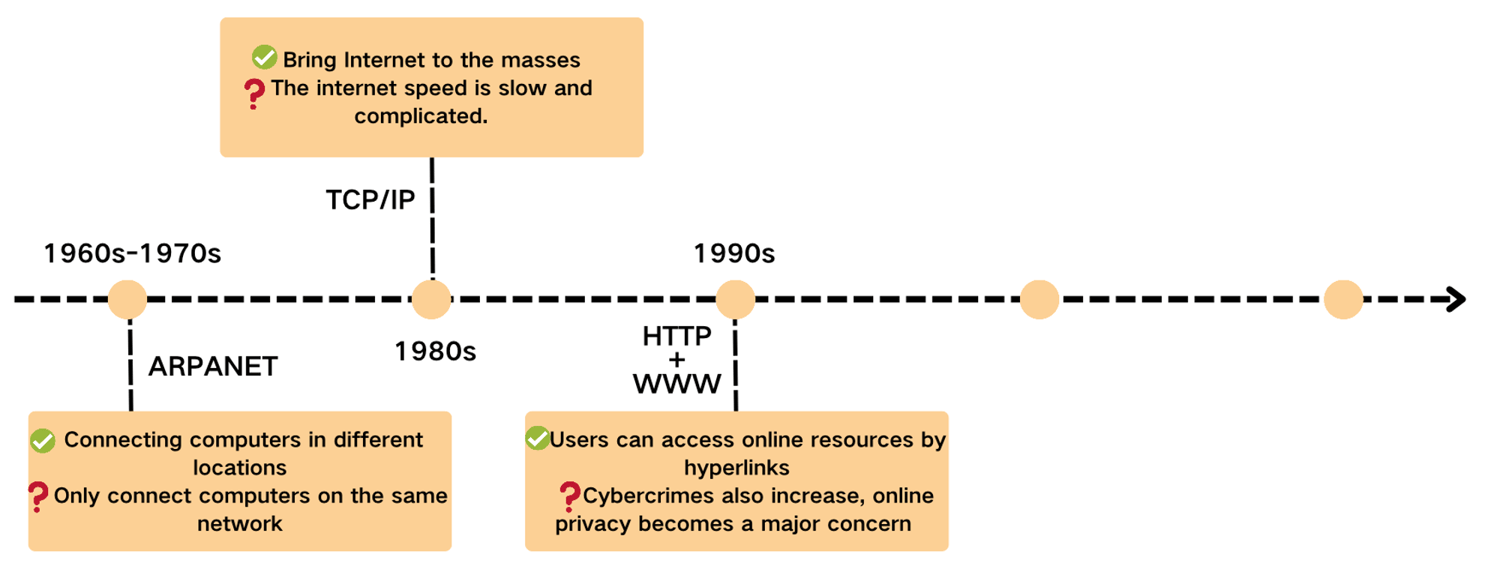
The Evolution of VPN Technology
The Birth of VPNs: 1990s
The first step towards VPN technology was IP-layer encryption. AT&T Bell Laboratories invented SwIPe (Software IP Encryption Protocol), which managed to encapsulate and encrypt entire data packets, showing the possibility of IP layer encryption. Building on this, IPsec was introduced in 1995, changing the game rules. It not only encrypted and encapsulated data but also verified the identity of the communicating parties, adding an extra layer of security. What’s more, its IP layer protection means IPsec could secure almost all types of traffic that run over IP without being restricted by any applications or protocols.
Learn More About IP: visit our IP checker page.
The First VPN Protocol: PPTP

Source of the picture: https://wwwdisc.chimica.unipd.it/luigino.feltre/pubblica/unix/winnt_doc/pppt/understanding_pptp.html
In the 1990s, tech giants came to realize the traffic can be encrypted, competing to develop VPN protocols. Microsoft engineer Gurdeep Singh-Pall introduced PPTP (Point-to-Point Tunneling Protocol), highlighting in the game . PPTP created a virtual data tunnel to ensure secure data transmission, enabling users to connect to their company's network from anywhere.
Learn more about PPTP and other early VPN protocols in our VPN Security Explained: Kill Switch, Split Tunneling, More page
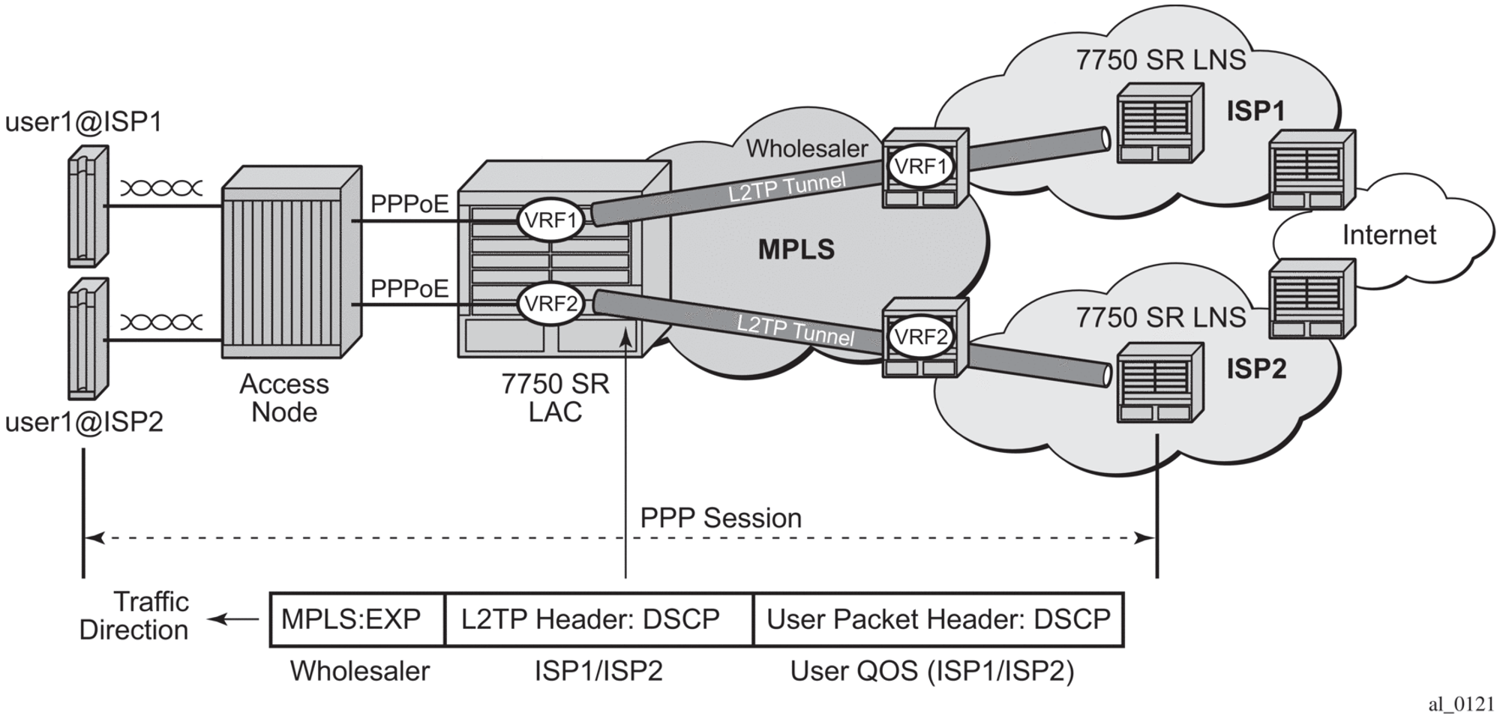
Source of the picture: https://infocenter.nokia.com/public/7750SR207R1A/index.jsp?topic=%2Fcom.sr.triple.play%2Fhtml%2Fl2tp.html
It happens that there is a similar case, Cisco also developed L2F, which offered more flexibility for handling different types of network traffic but was less compatible. To combine the strengths of both protocols, Microsoft and Cisco collaborated to create L2TP. L2TP, often paired with IPsec for enhanced security, provided a more flexible tunneling mechanism, though it was complex to configure.
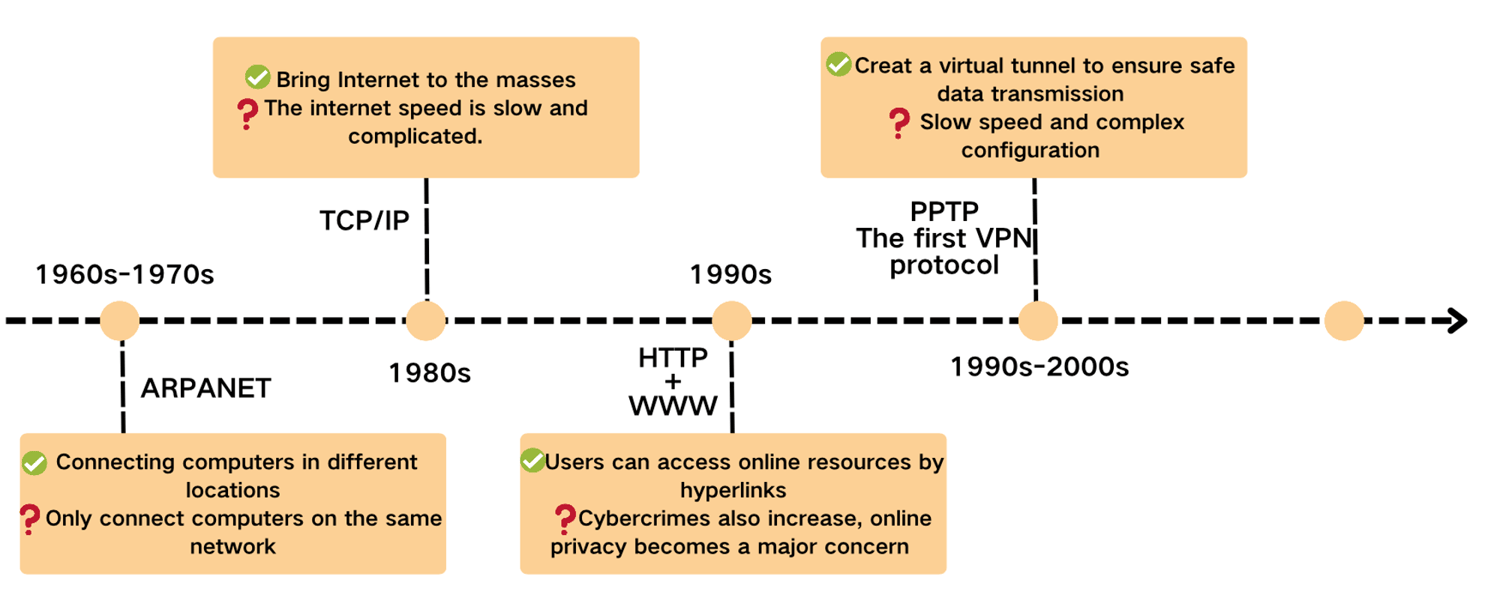
OpenVPN: 2000s
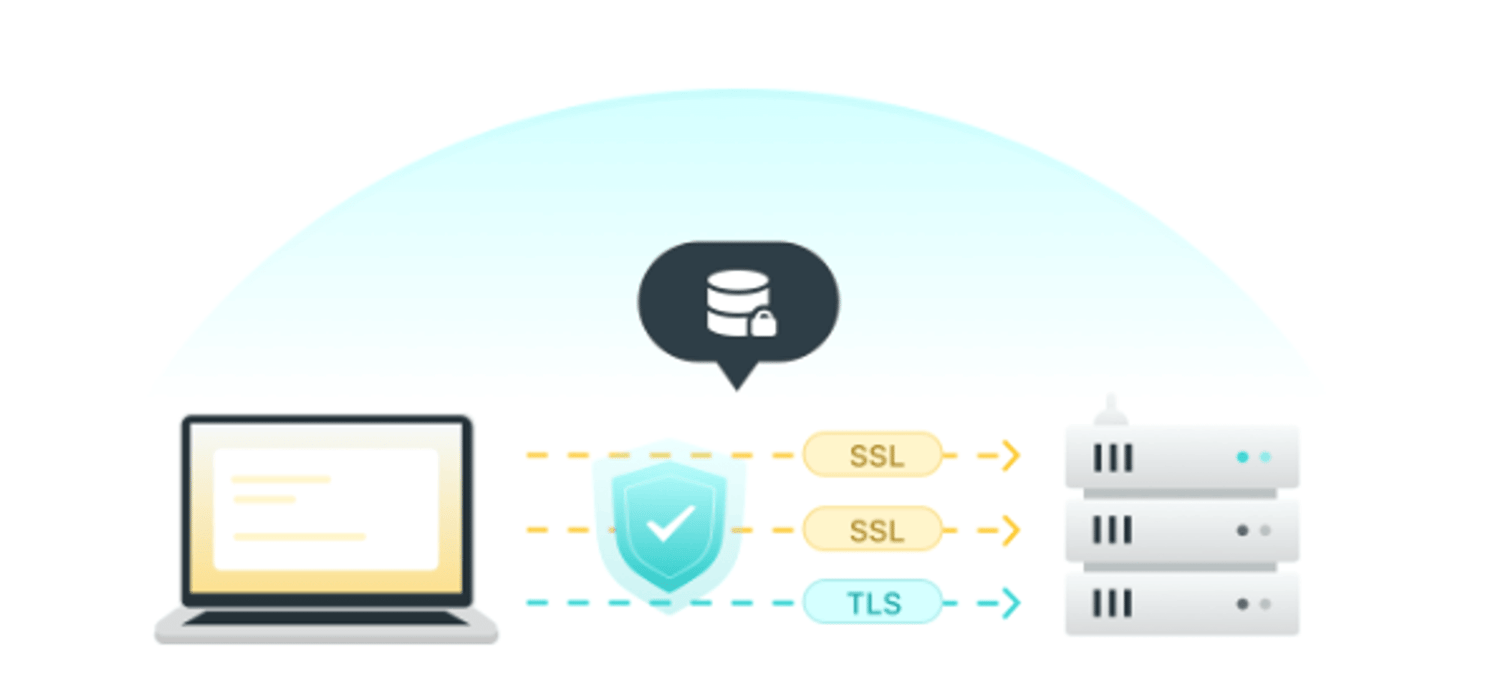
As the internet and online business grew in the 2000s, the demand for secure, cost-effective connections increased. OpenVPN was developed, offering simpler configuration and enhanced security. As an open-source solution, OpenVPN allowed users to customize their configurations, making it popular for both personal and corporate use.
By 2005, the first commercial VPNs appeared, making VPN technology more accessible and secure for the public.
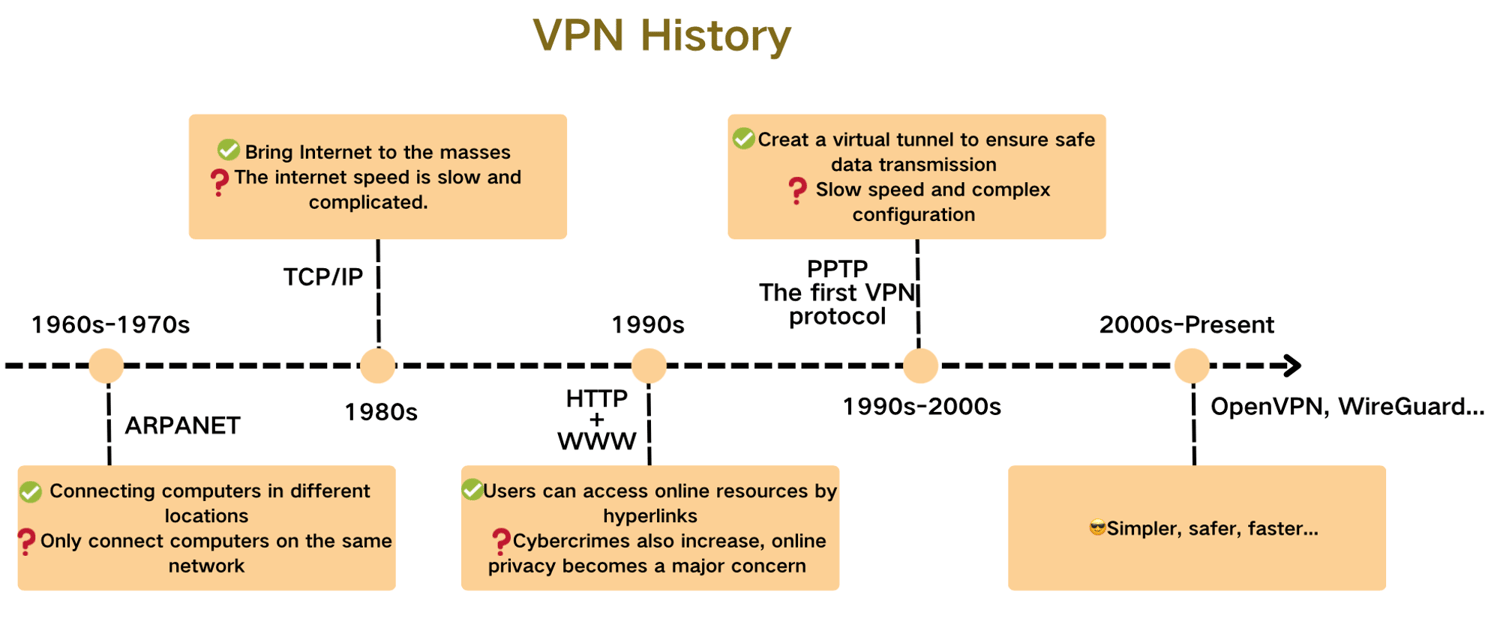
2010s-Present: Modern VPN Solutions
Today, the Internet is an essential part of our lives. We shop, play games, and stream content online. As our needs grew, so did the requirements for VPNs. The WireGuard protocol, introduced in the 2010s, offered stronger encryption and faster speeds with simpler configurations, making it the most popular protocol.
For more on modern VPN solutions, see our post on 30 Top VPN Features: How They Work.

VPN providers have also developed private protocols. For example, X-VPN introduced the Everest Protocol to address the issue of public protocols being blocked, offering a safer and faster alternative. Moreover, you can try it extremely free to enjoy a smooth, safe and unrestricted browsing!
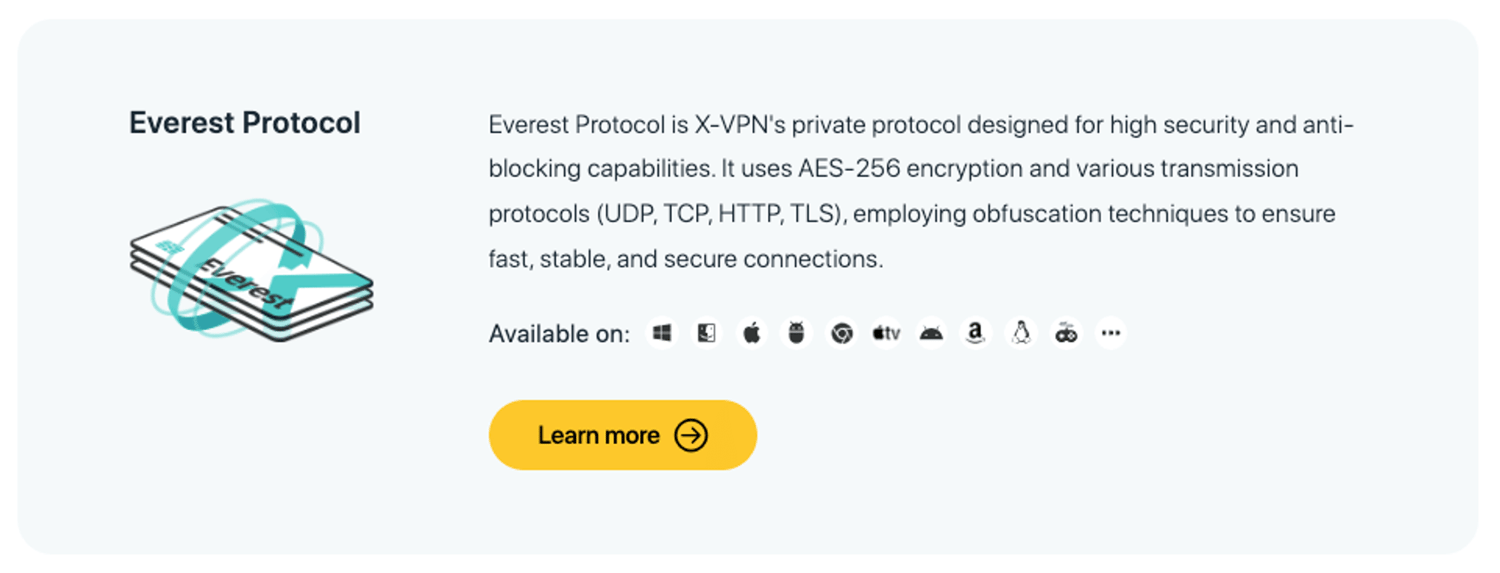
Conclusion
Thank you for joining me on this journey through the history of VPNs. What does the future hold for VPNs? The future of VPNs is bright. Even as life slowly returns to normal after COVID-19, the importance of online privacy remains strong. Additionally, with rapid advancements, VPNs are becoming more secure, user-friendly, compatible, and affordable.
Think of VPNs as your online companions for the future. Don’t wait—download X-VPN now and experience the cutting-edge technology of tomorrow, today!
For a comprehensive guide on using VPNs, check out our How to Use a VPN: All You Need to Know page.
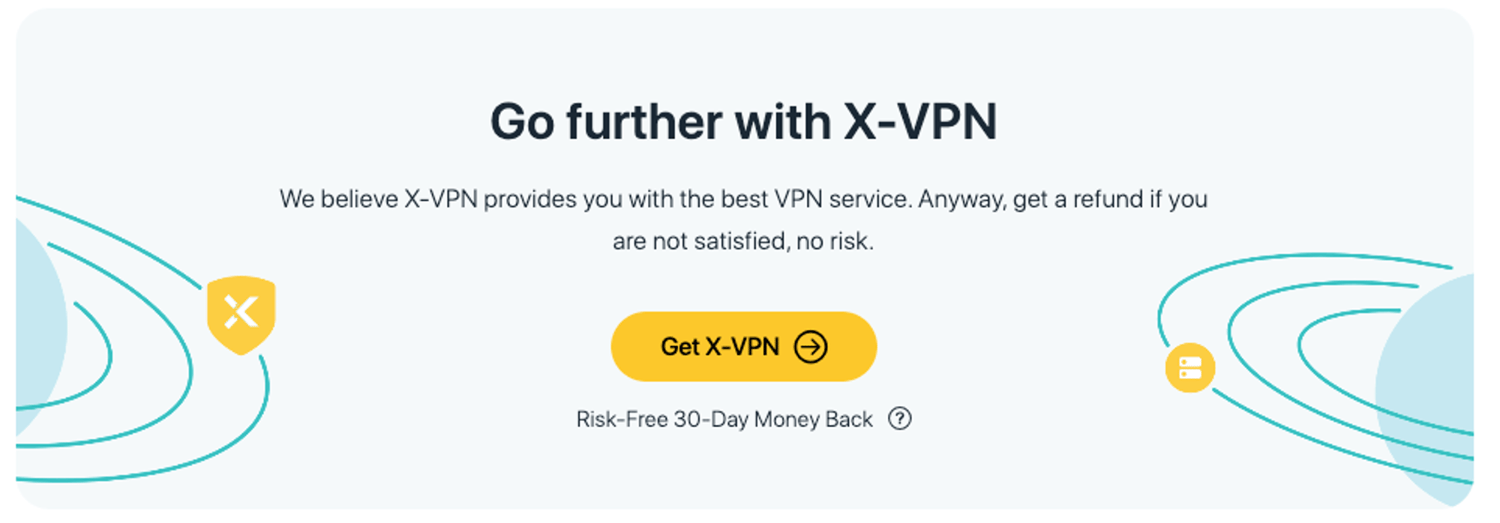
FAQ
What is a VPN?
A VPN (Virtual Private Network) is a technology that allows users to connect to the Internet through an encrypted tunnel to protect privacy and security.
What was the first VPN protocol?
The first VPN protocol is PPTP (Point-to-Point Tunneling Protocol), which created the history of allowing secure connections over the Internet.
Why do we need to use a VPN?
VPNs protect your online privacy, prevent hacking, bypass geographic restrictions to access global content, and protect your data from prying eyes.
Can VPNs hide my browsing history?
VPNs can hide your browsing history from ISPs and third parties. However, they cannot hide it from websites you visit, like Google or Bing. If you are concerned about this, be sure to check their terms and conditions.
How do I choose the right VPN?
When choosing a VPN, consider the following factors: security, speed, user-friendliness, compatibility, and price. It's also a good idea to read user reviews and expert reviews.
Follow Us on Social Media
Recent Articles
How to Use VPNs for Secure Social Media Management
Jul 29, 2024 | 9 mins to readHow to Set Up a VPN on Windows 10/11?
Aug 14, 2024 | 7 mins to readHow to Use Signal App in Russia: Solve Signal Ban
Aug 12, 2024 | 4 mins to read30 Best FMovies Alternatives in 2024 (Still Working)
Aug 12, 2024 | 14 mins to readAccess anything anywhere anonymously with X-VPN
24/7 one-one live chat support
Ultimate protection for 5 devices
Access to all worldwide contents
8000+ servers at 225 locations
30-DAY MONEY-BACK GUARANTEE

